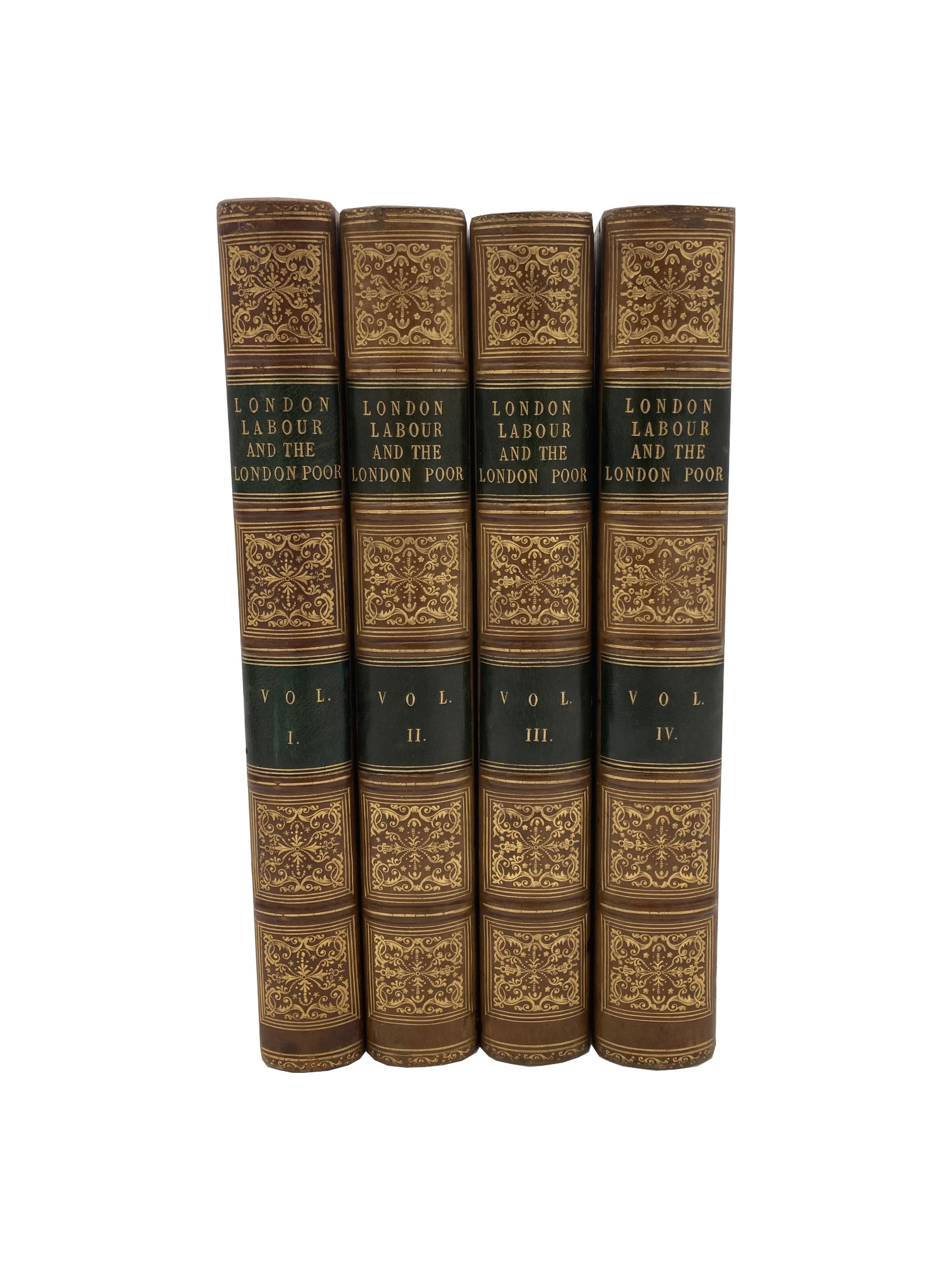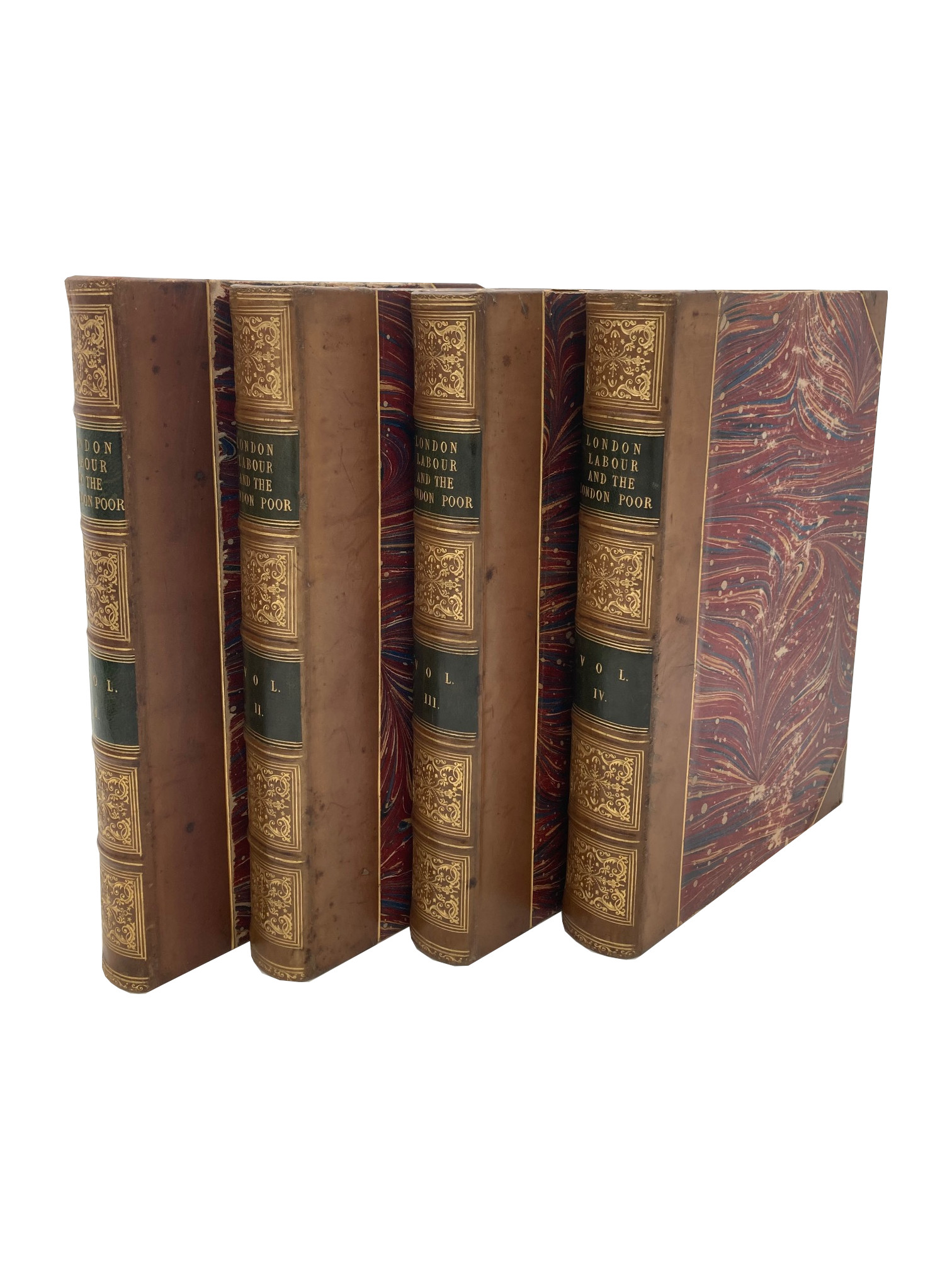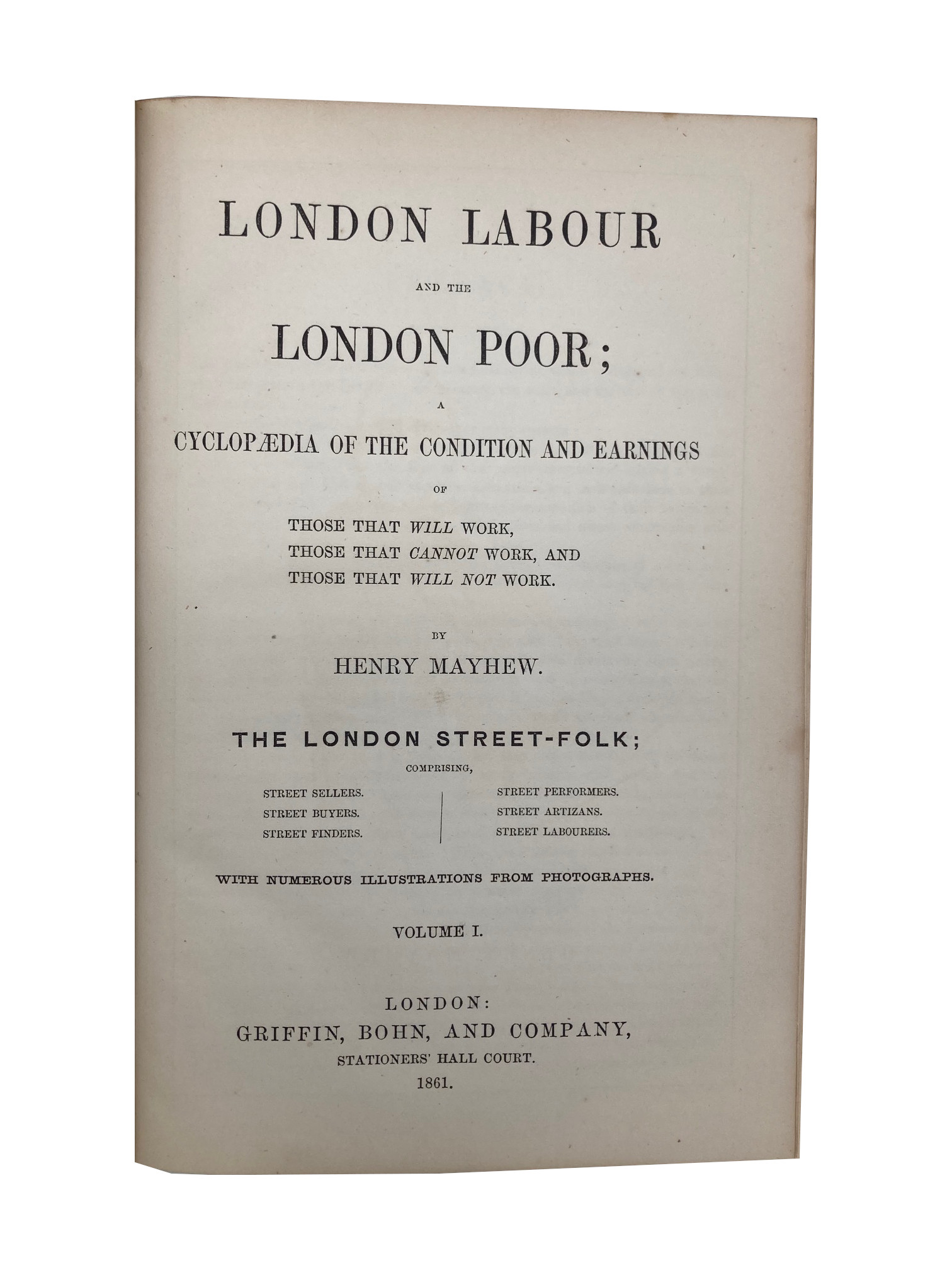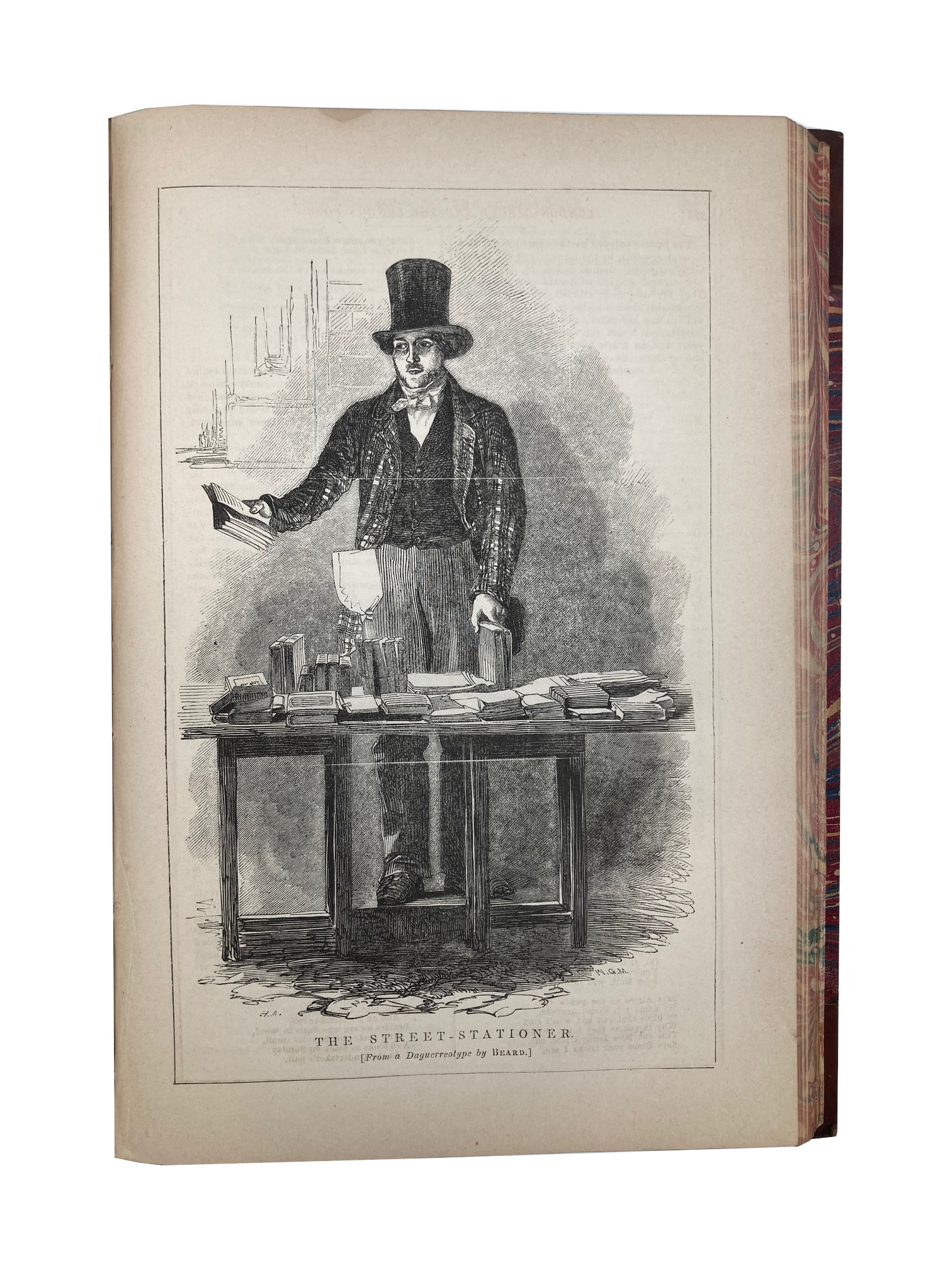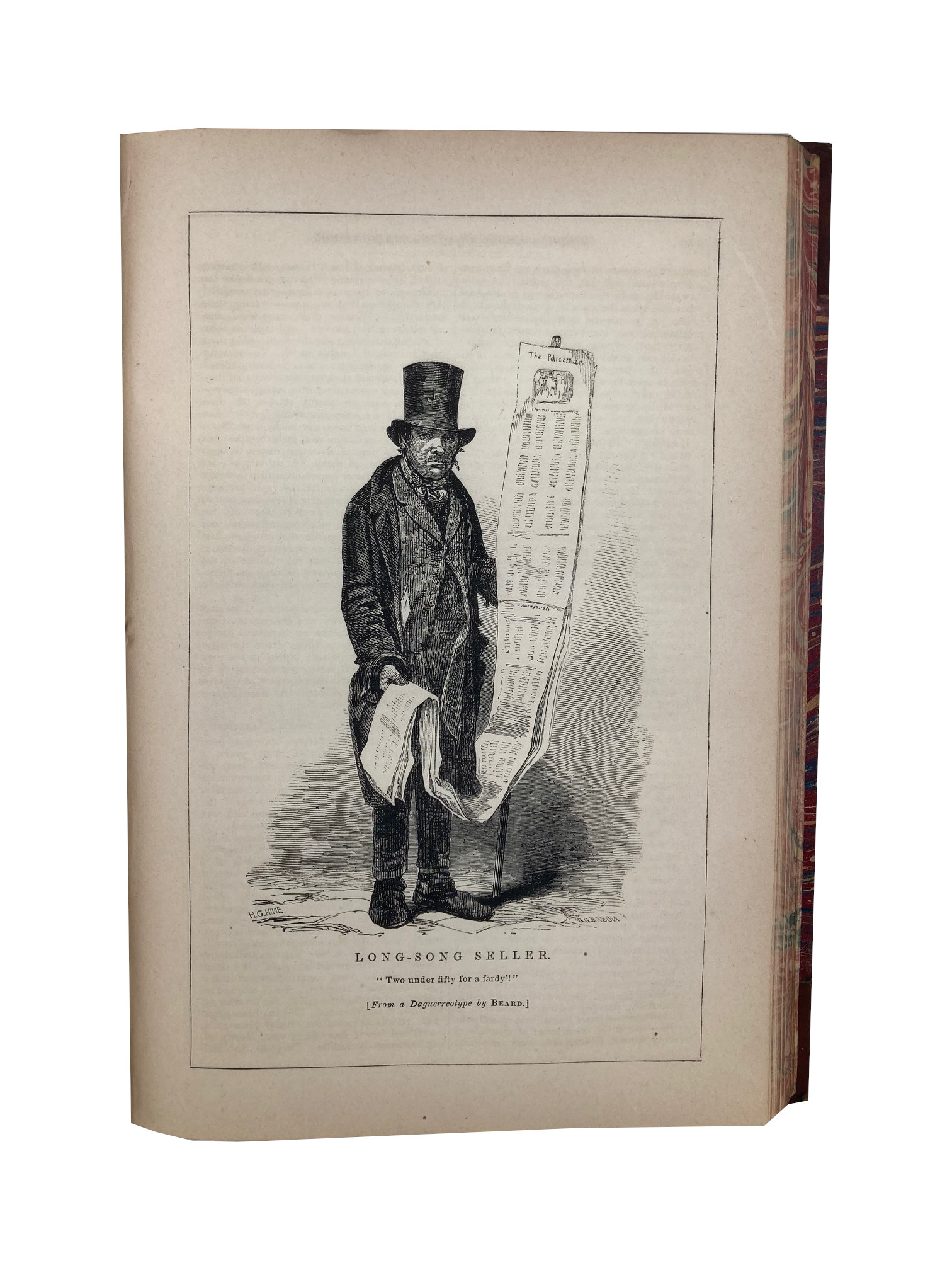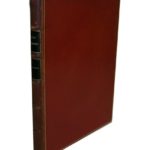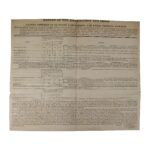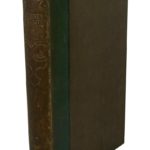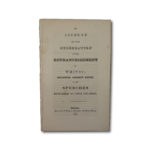Description
[004368] Mayhew, Henry. London Labour and the London Poor; A Cyclopaedia of the Condition and Earnings of Those That Will Work, Those That Cannot Work Work, and Those That Will Not Work. London: Griffin, Bohn, and Company, 1861. First Thus. 8vo. Hardback. Good+. Four volumes complete, 1861-1862 – Volume One – [5]-iv, [6], 2-492pp; Volume Two – [9], 2-512pp; Volume Three – [9], 2-442pp; and Volume Four – [7], viii-xl, [1], 2-448pp, [54]. Uniform near contemporary half calf and marbled paper over boards, raised bands, spines in six panels, title label to second panel, matching volume label to fourth, remaining panels with triple fillet border and filled with volutes, all edges marbled, with marbled endpapers
Wear to corners, marbled paper covering boards rubbed, otherwise externally quite bright. Internally lightly browned, occasional light foxing to page edges, and a few instances of creasing, pages 225-6 and one plate in the second volume are browned to edges with a small tear to fore edge, otherwise fairly bright and clean. With all plates called for, with two extra plates in the first volume, (a total of ninety-nine plates), and with fifteen maps to end of the fourth volume. Bound by Winstanley of Manchester, with their ink stamp to reverse of front marbled endpaper in volume one
The first two volumes were originally published in weekly parts in 1851, the publication was interrupted by a law suit and long suspended, it was then reissued with additions as here. Henry Mayhew (1812-1887), author and social reformer, “his London Labour and the London Poor (2 vols., 1851; reissued with additions, 1861, 1862, 1864, 1865) remains a seminal study of London street life in the middle of the century, and has been often reprinted. It is required reading for anyone interested in the minutest details of Victorian lower-class life, such as what kinds of foods were sold on the streets, how financial transactions with street-sellers were conducted, and how vendors ‘cried’ their wares. Mayhew provided ‘in embryo at least a theory of the specificity of the London economy which in turn made intelligible the economic behaviour of the London poor’ (Jones, 263). The study had its origin in a series of eighty-two articles, published from October 1849 through December 1850, entitled Labour and the Poor, in the Morning Chronicle (Mayhew was its metropolitan correspondent). The series was hugely popular, attracting enthusiastic letters from readers and resulting in the establishment of a special Labour and the Poor Fund” (ODNB)
Einaudi 3803; Kerssemakers, Social Liberation 4686, noting that “Volume IV is of special interest, with extensive population and crime statistics of England and Wales and includes: ‘On the Agencies at present in operation in the Metropolis for the Supression of Vice and Crime’ by W. Tuckniss, and essays by B. Hemyng on prostitution, by J. Binney on thieves and swindlers, and by A. Halliday on beggars”
